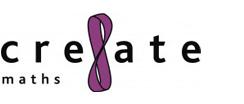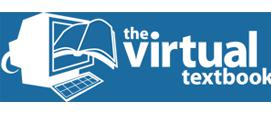Interpreting mathematical relationships
Students are required to be able to find the mathematical relationship between two variables, such as finding the nth term of an arithmetic sequence and be able to then interpret the mathematical relationships linking the algebraic structure to the geometric context in which the relationship occurs.
Visit the secondary mathematics webpage to access all lists.
- ALL
- Textbook
- Experiment
- Interactive resource
- Activity sheet
Textbook
Task Maths 2
This Task Maths book covers a wide range of topics. The sections relevant to this topic are:
Surrounded (page 61 of the pdf) requires students to form patterns by counting the number of squares required to repeatedly surround a shape drawn on squared paper. Throughout the activity, students are encouraged to generalise and explain their findings. The activity moves on to use different shapes and to move into three dimensions.
When are things the same? (page 69 of the pdf) begins by considering congruent shapes. The learner is then taken on a mathematical journey looking at other situations in mathematics where things are the same. Examples include the same amount represented in different units and numbers represented by different addition sums. This leads to looking at when different looking formulae actually mean the same. This could lead to looking at geometric situations which lead to the same result in different ways - for example different ways of splitting up a shape to find its area.
Matchstick patterns (page 105 of the pdf) requires students to generate number patterns by creating patterns using matchsticks, generating formulae and exploring the structure of the formulae generated.
Experiment
Making Molecules
This Cre8ate resource contains activities requiring students to explore, form and explain relationships between variables. The activity Hydrocarbons asks students to explain how the number of carbon atoms is related to the number of hydrogen atoms in a hydrocarbon, whilst the activity Isomers asks students to consider the different number of ways atoms can be arranged.
Interactive resource
Finding a Formula
This resource contains three excel programs to explore different situations that require students to find a formula.
Chessboard asks how many squares are there on a chessboard. The problem is set up then subsequent spreadsheets build up, step by step, to reveal a pattern.
Chess Cube extends the chess square problem to pose the problem of how many cubes are there in an 8x8x8 cube.
Painted Cube is designed for the teacher to lead students through a strategy for solving the classic painted cube problem. Summary sheets show how patterns are created, formulae derived and predictions made.
Each spreadsheet contains further problems for students to explore.
Activity sheet
Patterns and Generalisations
This pack of activities contains a huge variety of activities for a wide range of abilities all of which require students to use patterns and diagrams to make number sequences, find rules and make generalisations. The important point from the teachers point of view is to create the opportunity within the lesson for students to explain how the structure of the formula relates to the geometric structure of the pattern. For example, a matchstick pattern generating a formula for the number of matchsticks (m) in the nth pattern could be m=3n+1 and could be explained as we start with one match, hence the +1 and to get each term in the sequence add a further three matches each time, giving the 3n.
Sequences
This resource contains a number of instant maths ideas which are appropriate to this topic so long as there is the opportunity and the requirement for students to explain the structure of their results. Students are asked to make sequences of animals using linking cubes, create sequences using matchsticks, to consider ever-increasing rectangles and further problems requiring students to interpret the structure of formulae more complex than simple linear formulae.






